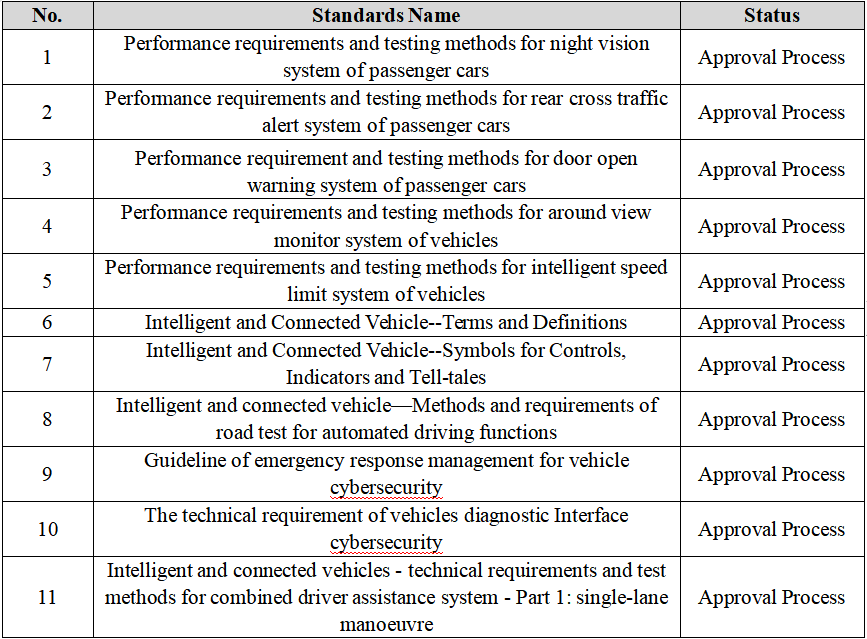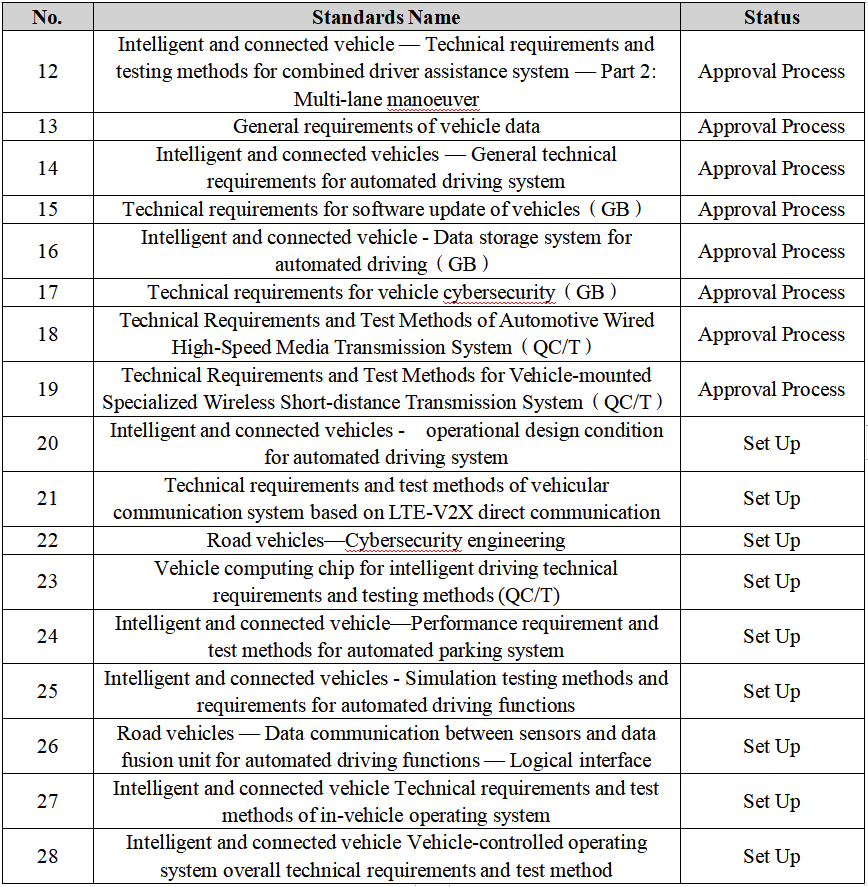Automotive Standardization in ChinaOverview in Year of 2023
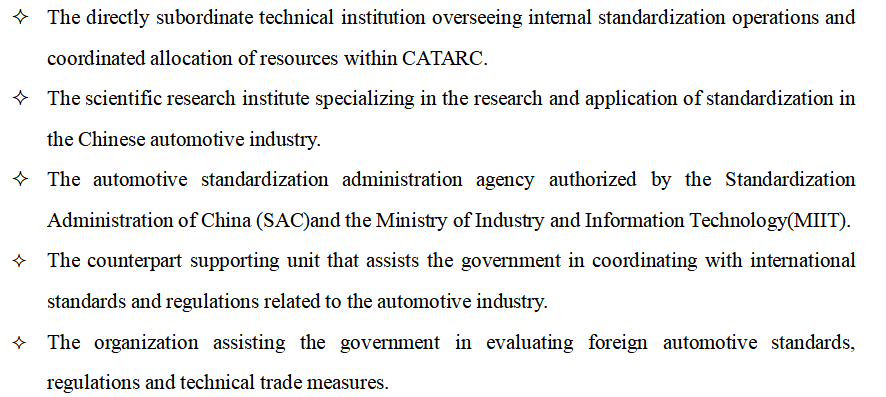
Table 1. Main Roles of CASRI
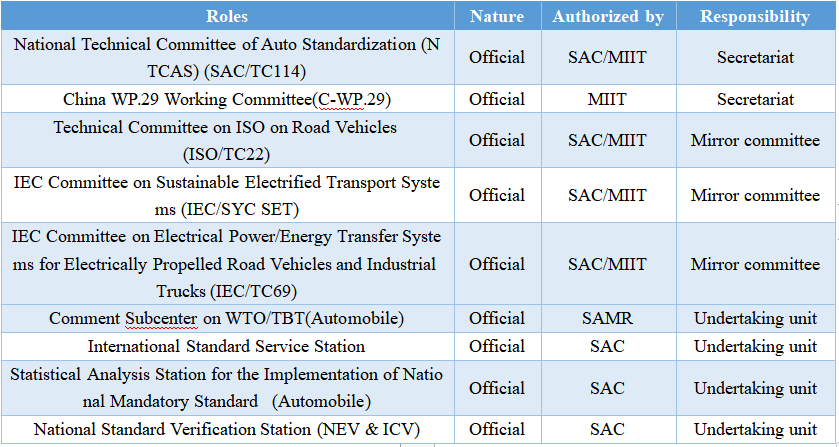
2. China Automotive Industry Development in 2023
In 2023, China's automobile production and sales reached to 30.161 million units and 30.094 million units with an increase of 11.6% and 12% year-on-year respectively. The production and sales hit record high and achieved double-digit growth. The passenger vehicles market continues to grow well, playing an important role in stabilizing the basic plate of automobile consumption. The commercial vehicles market marked a healthy rebound upon 4 million units. New energy vehicles(NEV) continue to maintain rapid growth, production and sales exceeded 9 million units, market share of more than 30%, which is an important force leading the transformation of the global automobile industry. China’s automobile exports hit a new high, with exports approaching 5 million units in 2023, effectively pulling the industry as a whole to rapid growth.
2.1 New Energy Vehicles Maintains Momentum in Production and Sales
Under the combined effect of policy and market, China's new energy vehicles continued to grow rapidly in 2023. The production of new energy vehicles was 9,587,000 units, up 35.8% year-on-year; the sales volume was 9,495,000 units, up 37.9% year-on-year. The market share of new energy vehicles reached 31.6% this year, 5.9 percentage points higher than the same period of the previous year. The production and sales of new energy commercial vehicles accounted for 11.5% and 11.1% of overall commercial vehicle production and sales, respectively; the production and sales of new energy passenger vehicles accounted for 34.9% and 34.7% of overall passenger vehicle production and sales, respectively. In 2023, China domestic sales of new energy vehicles amounted to 8,292,000 units, a year-on-year increase of 33.5%; its exports of new energy vehicles amounted to 1,203,000 units, a year-on-year increase of 77.6%.
2.2 Exports Have Been Booming
In 2023, China's auto exports hit a new high, becoming an important force driving the growth of auto production and sales. Automobile exports of 4.91 million units, up 57.9% year-on-year, the contribution of exports to the growth of total automobile sales reached 55.7%. By vehicle type, passenger cars exported 4.14 million units, up 63.7% year-on-year; commercial vehicles exported 770,000 units, up 32.2% year-on-year. In 2023, traditional fuel vehicles exported 3.707 million units, up 52.4% year-on-year; new energy vehicles exported 1.203 million units, up 77.6% year-on-year.In 2023, pure electric vehicles exported 1.102 million units, up 80.9%; plug-in hybrid vehicle exports 101,000 units, up 47.8% year-on-year.
2.3 New Technology Trends in China
Global automotive technology development and innovation is in fierce competition in the field of electrification, decarbonization, intelligence, and Internet connectivity.
In the field of electrification and decarbonization technology, in order to solve the problems of electric vehicle safety and driving range, enterprises have been increasing their investment in the three core technologies of vehicle and battery, motor and electronic control, strengthening the research of lithium, sodium and magnesium and other new materials and new solutions in the upstream and the development of mineral resources, as well as increasing the research of fast-charging technology and the construction of charging facilities in the downstream.
In the field of intelligence and Internet connectivity technology, on the one hand, it affirms the importance of hardware facilities and focuses on the R&D of key components such as chips, radar and cameras; on the other hand, it introduces the concept of "software-defined automobile" and highlights the importance of the operating system, application software and logic algorithms; and it follows the logic of "bottom innovation" and puts forward a proposal to support the development of automated vehicles, focusing on the orientation of "integration innovation", the company implements the integrated development program of "vehicle energy, road and cloud".
3.Main highlights in Automotive Standardization in China
3.1 Status of standardization and revision in 2023
In 2023,the National Technical Committee of Auto Standardization (hereinafter referred to as "NTCAS") was approved to publish 138 new standards (63 national standards, 3 amendments and 72 industry standards).
As of December 2023, a total of 1,516 automobile (including motorcycle) standards have been published. China Automobile Standards System (Fig.1.) is composed of 865 automotive industry standards, 523 recommended national standards, and 128 mandatory national standards (including 35 for active safety, 29 for passive safety, 42 for general safety, and 22 for environmental protection and energy conservation).
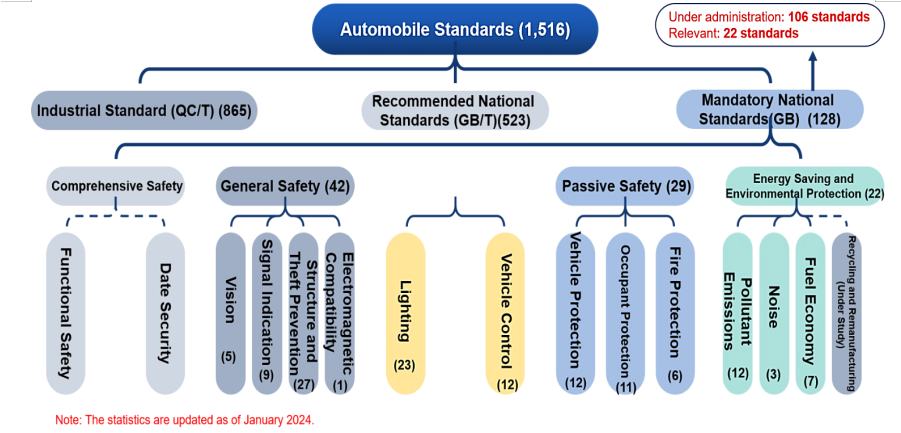
Fig.1.China Automobile Standards System, January 2024.
3.2.1 Overview of Electric Vehicles Standard System in China
The establishment of China's electric vehicle standard system takes the following two points into consideration: First, electric vehicles, as vehicles, should meet all the general automobile standards applicable to them; then compared with traditional automobiles, there are differences between electric vehicles in terms of energy storage systems, power systems and energy supply systems, etc., and the standard system for electric vehicles is mainly built based on these particularities.

In Whole Vehicle area: promote the formulation and revision of a series of standards for remote service and management.
In Fuel Cells area: complete the review and approval of standards for post-crash safety and engine durability, and promote research on standards for communication protocols for hydrogen refueling ports and hydrogen injectors.
For Power Storage Battery: complete the review of power battery electrical performance standards, submit for approval, promote the revision of safety standards, specifications and dimensions and other standards.
For Electric Drive System: complete the national standard for drive motor system for approval, and accelerate the research on the working condition efficiency standard of drive motor system.
For Charging and Swap: complete the release of standards for charging interfaces, charging and discharging safety, and interchangeability of commercial vehicles switching; promote research on communication protocols, guide circuits, and megawatt-level charging standards; and promote research on national standards for commercial vehicle swapping safety.
Table 2. EV standards published in 2023
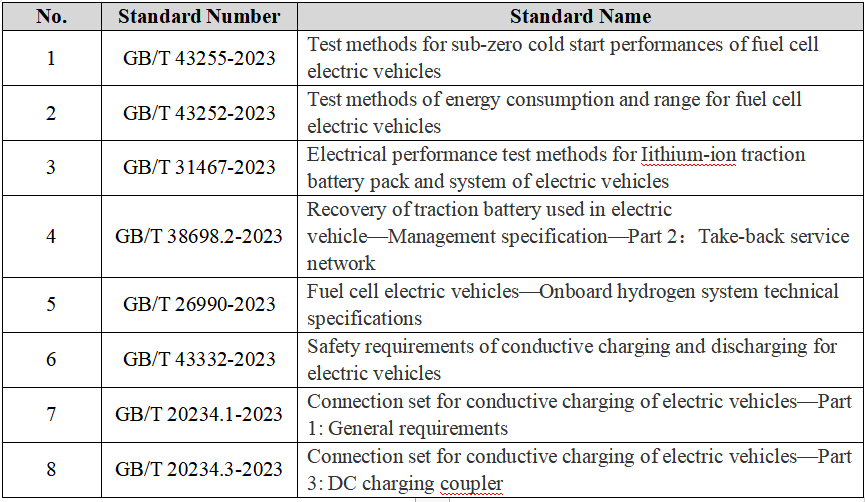
3.2.2 Two National Standards on Connection Set for Conductive Charging of Electric Vehicles were newly released.
On September 7, 2023, GB/T 20234.1-2023 Connection set for conductive charging of electric vehicles—Part 1: General requirements & GB/T 20234.3-2023 Connection set for conductive charging of electric vehicles—Part 3: DC charging coupler were released.
Power exchange as a new form of energy supplement in the field of electric vehicles, the market size is apparently expanded in 2023. The two standards guarantee the compatibility of the old and new charging interfaces, increase the charging voltage and current rating, and add technical request for active cooling system, temperature monitoring and other high-power charging-related functions, which are conducive to further enhance the environmental adaptability, safety and reliability of the conductive charging connecting device, and effectively meet the development of high-power charging technology and market demand. Meanwhile, these two new standards optimized test methods for mechanical performance, locking device and service life then further enhanced the performance and reliability of the conduction charging connection device.
3.2.3 Two National Standards on Energy Consumption Label were newly released.
On September 8, 2023, GB 22757.1-2023 Energy consumption label for light-duty vehicles—Part 1: For gasoline and diesel vehicles & GB 22757.2-2023 Energy consumption label for light-duty vehicles—Part 2: For off-vehicle-chargeable hybrid electric vehicles and battery electric vehicles were approved and released.
The automobile energy consumption labeling standard is an indispensable and important part of the automobile energy conservation standard and management system, and is also an important technical basis for national energy-saving management of automobile products. On the one hand, the two standards extend the energy consumption scenarios to special test scenarios, further modify and improve the content, structure and appearance of the label, so that the energy consumption of the label is closer to the actual context and meets the demands of the government and consumers; on the other hand, they adjust the parameters of the label's energy information and take into account both the Worldwide harmonized Light vehicles Test Cycles (WLTC) and the China light-duty vehicle test cycle (CLTC), so as to solve the problems brought about by switching to these two test cycles, at the same time, it avoids revising the label again after switching to CLTC.
3.2.4 Intelligent Connected Vehicles
In July 2023, the new version of the Guidelines for the Construction of a Standard System for Intelligent Networked Vehicles was released, which called establishing phased intelligent connected vehicle standard system that adapts to China's national conditions and is in line with international standards for 2025 and 2030 (Fig.3).
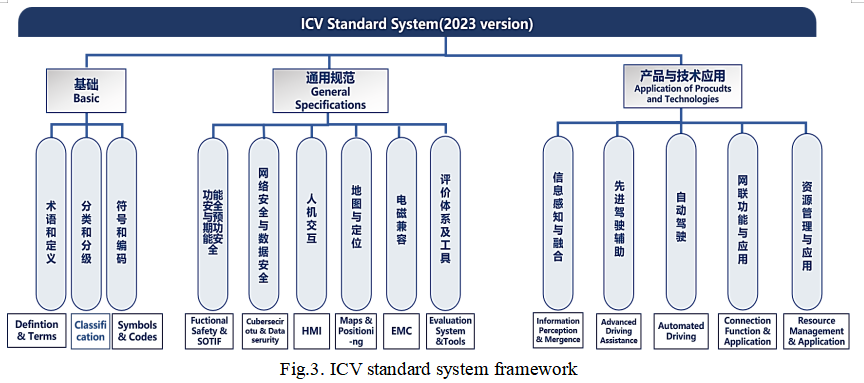
u 2025 - form up an intelligent and connected vehicle standard system that can support the universal functions of combined driving assistance and automated driving.
u 2030 - Fully form up an intelligent and connected vehicle standard system that can support the coordinated development of vehicle intelligence and connected vehicle empowerment.
Table 3. ICV Standard/ or project under development in 2023
